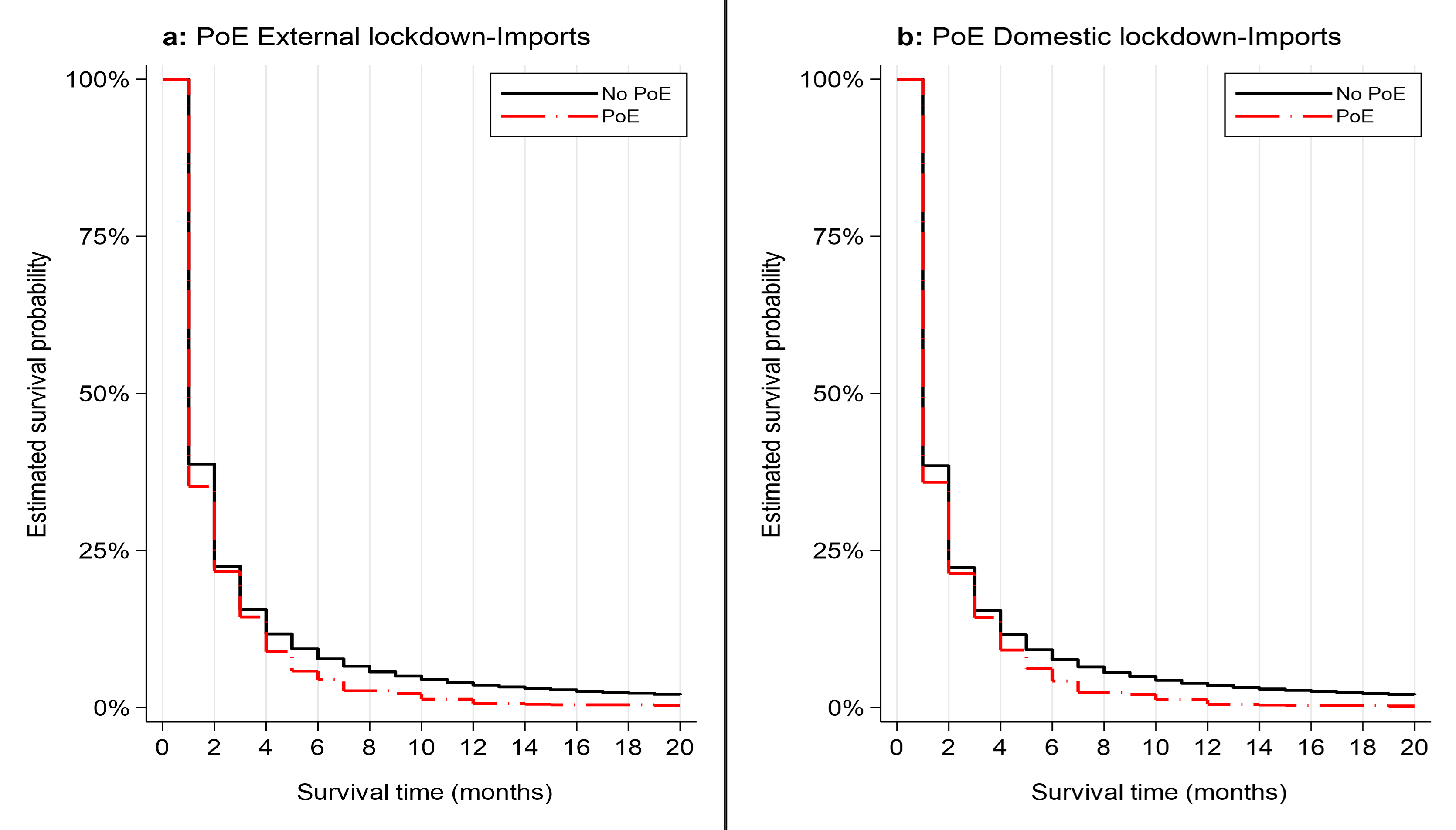 Cargo Ship at port. | © shutterstock.com
Cargo Ship at port. | © shutterstock.com
Although COVID-19 is primarily a health crisis, its effects also extend to social and economic aspects of countries. For example, after pandemic-induced measures were imposed globally to contain transmission of the pandemic, trade collapsed, and demand and supply shocks became widespread. These shocks then spread and increased through disruptions in the global supply chains. A recent World Bank working paper assesses the trade effect of the pandemic on Indonesia, Southeast Asia’s largest economy.
Our study examines the broad effects of lockdown measures—both domestic and external—on Indonesia’s import and export markets, including the survival of products in these markets. The analysis differentiates between sea and air trade, as well as assesses the role of specific non-tariff measures (NTMs), on the effect of lockdown measures on trade performance using the recently released Indonesia NTM database. Lockdown is a composite indicator used when any of the following measures were imposed by Indonesia and its trading partners: workplace closure, public transport closure, stay at home requirements, restrictions on internal movement, and international travel controls. For imports, domestic lockdowns represent demand factors and external lockdowns represent supply factors. The opposite applies for exports.
Event-study results show that overall, imports were more negatively affected by lockdown policies than were exports, which, unlike imports, recovered during the sample period . The decline in both exports and imports was mainly attributed to lockdown policies implemented by Indonesia’s trade partners rather than domestic lockdowns, except for imports subject to NTMs. Restrictions on international travel, workplace closures, stay at home orders and internal movement restrictions—in that order—had the largest impact on imports (figure 1). Imports entering Indonesia by air were more affected by external lockdowns than those entering by sea, mainly attributed to restrictions on international travel which limited the availability of air cargo during the pandemic (figure 1). Demand factors, such as workplace closures and stay at home orders in the partner countries were the drivers of the decline in exports (figure 2).
Figure 1. Effect of lockdown policies in partner countries on Indonesia’s imports (% change)

Note: All coefficients are significant at 10 percent level. Months are months after lockdown.
Source: Authors’ compilation
Figure 2. Effect of lockdown policies in partner countries on Indonesia’s exports (% change)

Note: All coefficients are significant at 10 percent level. Months are months after lockdown.
Source: Authors’ compilation
Results from the product-country relationship survival analysis show that the failure rate of imports subject to NTMs had lower survival rates during both domestic and external lockdowns, especially those subject to port of entry restrictions (figure 3) and import approvals. Intermediate imports subject to port of entry restrictions and pre-shipment inspections were more negatively affected by external lockdowns, which seem to have worsened the supply side factors for imports. Domestic lockdowns adversely affected intermediate imports subject to nontariff measures, especially measures requiring physical inspection and testing, such as certification with Indonesian product standards or Standar Nasional Indonesia (SNI) and import approval processes.
Figure 3. Import Survival between products that were affected by Port of Entry restrictions (PoE)

These results suggest that supply factors had a larger impact of external lockdowns on imports than demand factors related to the COVID-19 shock. However, NTMs on Indonesia’s imports exacerbated the impact of demand factors for imports. Meanwhile, demand factors in the partner countries were the drivers for the slump in exports.
Enhanced trade facilitation to keep goods moving as smoothly as possible, reforming burdensome non-tariff measures, and improving customs and other procedures—would ensure less disruptions from shocks in a globally integrated world, as this global integration is also key to resilience to such shocks. These would also ensure that port inspections and procedures that necessitate port of entry restrictions are conducted more efficiently to avoid backlogs and port delays. Additionally, procedures that require physical inspections of goods, and testing and certification and their processes, could be improved and where possible digitized.
Indonesia has taken several steps to address some NTMs and introduction of a more integrated risk management system in 2021. While these changes have the potential to vastly improve Indonesia’s trade, continued review of the trade policy regime will ensure the measures introduced are effective in reducing trade costs.



Join the Conversation